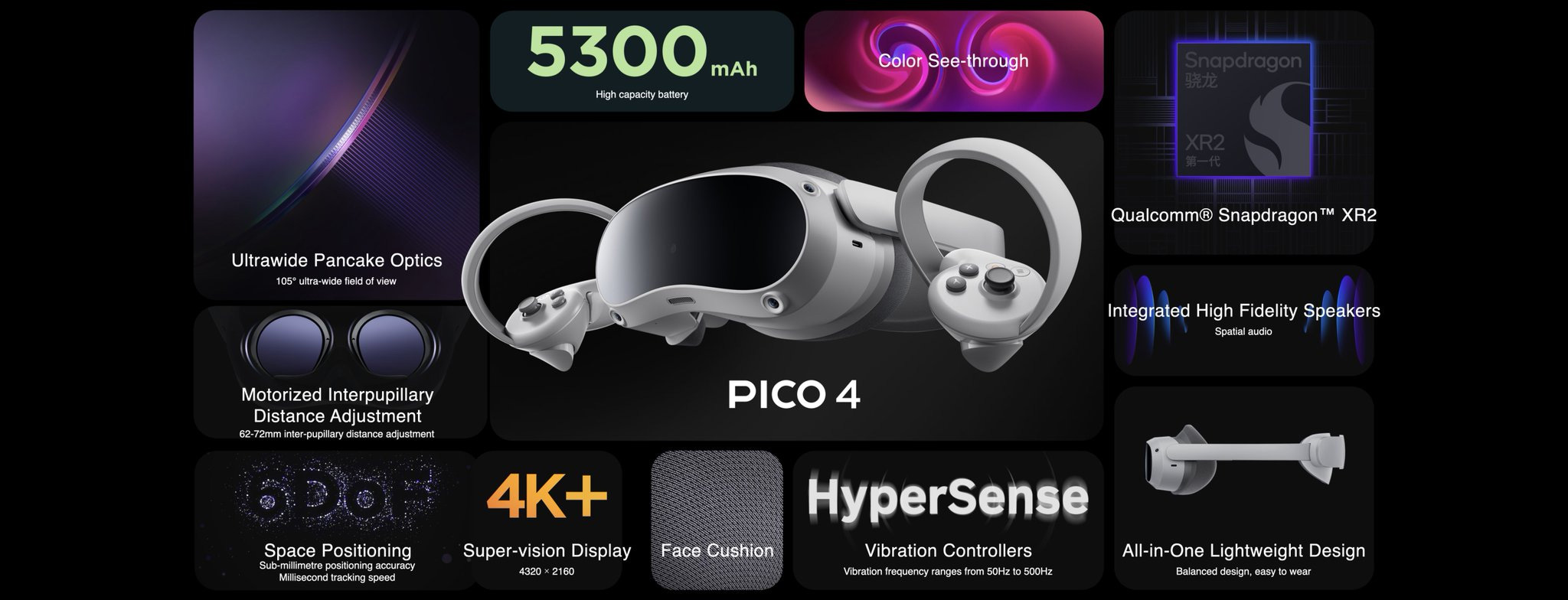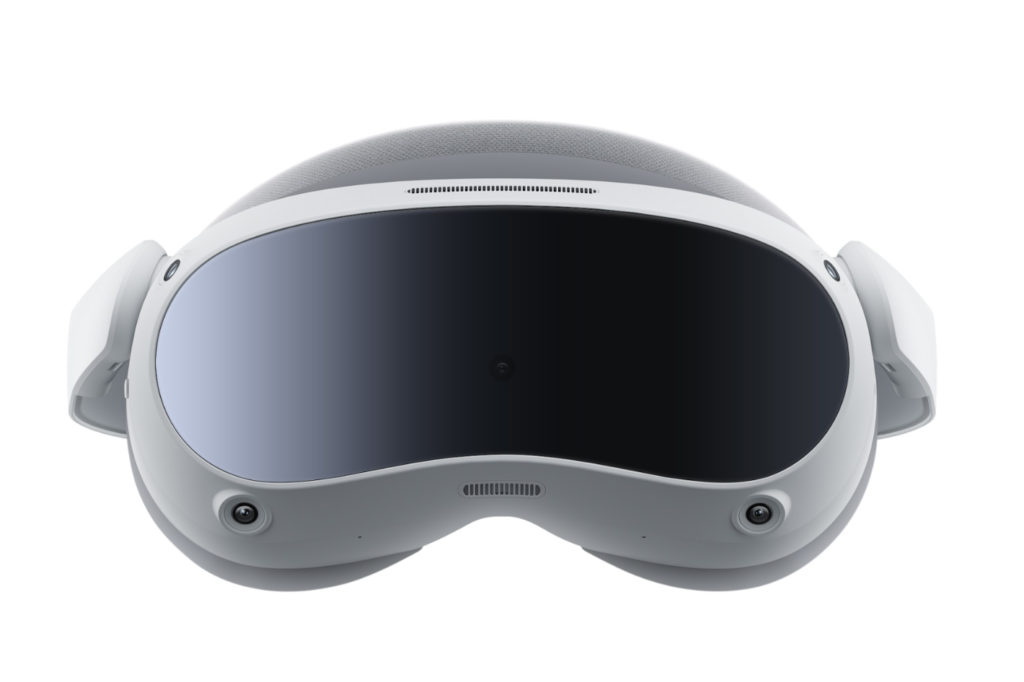 When last September I acquired a Pico 4 VR standalone headset to test, I was in for a surprise. Now, six months later, I’ve given my HP Reverb G2 to my older son, as I’ve not used it since I tried the Pico 4.
When last September I acquired a Pico 4 VR standalone headset to test, I was in for a surprise. Now, six months later, I’ve given my HP Reverb G2 to my older son, as I’ve not used it since I tried the Pico 4.
Although having a big space at Game Developers Conference, in San Francisco, Pico Interactive has not announced what so many expected: the official launch of the Pico 4 VR headset in the US. It continues to be a question without an answer: will Pico 4 be available in North America? Pico Interactive is a China-based company held by ByteDance, a parent company of TikTok. The names and origin explain, at least partially, the story: it’s never easy to forget politics, even when you’re dealing with virtual worlds.
Because they are, apparently, afraid that the Chinese might steal their data, US authorities have kept the Pico 4 at bay, while many countries, including in Europe, have allowed the Pico 4 VR headset to be sold in their markets. That’s how I got my Pico 4 VR headset, bought so I could test it. I never imagined that a standalone VR headset would make me forget the HP Reverb G2, a true PCVR headset, praised for its quality… and hated for how badly HP supports it in some markets.
My experience with the HP Reverb G2 has been both good and bad: when it works it is great (until I used the Pico 4 the G2 it was the best affordable PCVR available…), but problems with the – bad – quality of cables used to connect it, the rumors that HP is leaving the VR market, the fact that no one knows if Microsoft is invested into its Windows Mixed Reality or will simply drop it as it has done with so many other things, make those wanting to try VR look elsewhere.
 Why I stopped using the HP Reverb G2
Why I stopped using the HP Reverb G2
Stories published online make new potential buyers of the HP Reverb G2 question if it is worth it: connection cables out of stock for months, price of those cables going from 80 to nearly 200 dollars, HP presenting prices for installation of cables (!) are part of a – bad – public relations strategy. Having gone through the experience of dealing with cables working for less than 8 hours – only used for sitting down experiences – and having exchanged emails with HP about the whole problem, as their PR department was providing me with the cables directly, I’ve always made sure I had a replacement cable available… just in case.
Last Summer I replaced a G2 cable, as it stopped working properly after about one year of sitting down sessions. The cable now connected to the headset has a few months of use, as I stopped using the HP Reverb G2 as soon as the Pico 4 VR arrived. Now, after six months having the headset gathering dust, on my desk, I’ve decided to give the G2 to my older son. He also gets a completely new cable, still in the original box, as with the Reverb G2 you never know when the cables will die.
Tethered VR headsets continue to offer the best solution in terms of graphic quality, but don’t put aside the options offered by standalone headsets, especially as technology evolves. While there are other PCVR headsets available, none seems to offer the quality the HP Reverb G2 offers at similar price point, so I decided to look at a standalone VR headset that could be used if my HP Reverb G2 became a paperweight.
 Meta lost 15% market share, Pico gained it
Meta lost 15% market share, Pico gained it
If you want a VR headset and don’t mind to share your data with the Chinese, then the Pico 4 VR, which has some great reviews, is all you need. In fact, as soon as I showed it to friends of my younger son they changed their opinion: they want a Pico 4 instead of a Meta Quest 2. Technically, the Pico 4 is better than Meta’s headset, and that explains why, despite not being officially available in the US, it has eaten a share of Quest’s market.
One article in The Wall Street Journal notes that “Meta held 90% of the market share about a year ago, according to research firm International Data Corp. By the third quarter of 2022—the latest period for which data is available—its market share had dropped to about 75%. Market share for Pico more than tripled over the same period to about 15%. No other VR headset maker held more than 3% of the market. “
Yes, the Pico 4 is that good. With a resolution per eye of 2160 x 2160, the Pico 4 is in the same league as the HP Reverb G2 in terms of resolution… and has better – pancake – lenses. Had it a Display Port and it would be the PCVR headset to choose, I’ve no doubt about it. Maybe a Pico 5 will use the same base and go in that direction. Even if the price of a much needed Pico 5 may be higher, I believe those who want a serious PCVR solution will go for it. As for now, many people in North America are importing, on their own, the Pico 4, aware that it offers a much better platform for VR experiences.
 Will Pico overcome the TikTok hurdles?
Will Pico overcome the TikTok hurdles?
It’s clear that Pico Interactive did not want to sell the Pico 4 as the PCVR that people are discovering it to be, as they would prefer it to be used as a standalone VR headset to play the software sold through their store… but the fact that you can run PCVR titles with it… and do it wirelessly, makes the Pico 4 VR a great solution for anyone who wants to try VR. With a software as Virtual Desktop, for Wi-Fi streaming, you get a hassle-free PCVR experience that will change your perspective.
When I first tried the Pico 4 I could see the difference to the HP Reverb G2, which offers more detail, despite both having the same resolution. But as that detail in the G2 is only in the center area of the Fresnel lenses, soon I realized it was much more comfortable to use the Pico VR and its pancake lenses. Add to that the fact that you can use it without being tethered and the Pico 4 begins to become a better choice. For long sessions, you might want to use a cable to keep charging the Pico 4 batteries, but we’re talking about a simple USB-C cable you can buy anywhere and costs much less than the HP Reverb G2 cable… which mostly is a nightmare to find.
 So, after six months not using the HP Reverb G2, I’ve decided it is time to give it to someone who is still using my old Oculus Rift S. For my older son this is going to be a huge upgrade. Me, I could not go back to the G2. After trying the Pico 4 there is no way I would return to anything else, for now. Yes, the Chinese Pico 4 VR is that good. If Pico Interactive manages to overcome the hurdles caused by its connection to ByteDance and TikTok, and becomes available to the US consumers, they will rapidly discover what they have been losing all this time.
So, after six months not using the HP Reverb G2, I’ve decided it is time to give it to someone who is still using my old Oculus Rift S. For my older son this is going to be a huge upgrade. Me, I could not go back to the G2. After trying the Pico 4 there is no way I would return to anything else, for now. Yes, the Chinese Pico 4 VR is that good. If Pico Interactive manages to overcome the hurdles caused by its connection to ByteDance and TikTok, and becomes available to the US consumers, they will rapidly discover what they have been losing all this time.
Slowly, the Pico family of VR headsets is making it to the market, so maybe the US will join the Europeans. The headsets are also being used for production and the PICO XR plugin for Unreal Engine 5 released on February 2023, which is the middleware for development on Pico headsets, is a sign of the path forward. The PICO Unreal5 XR SDK is still in the experimental stage and is therefore for testing purposes only, but the release of the official version is expected to happen in May.

Filmtools
Filmmakers go-to destination for pre-production, production & post production equipment!
Shop Now













